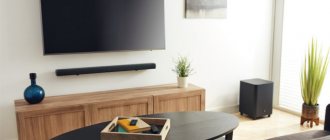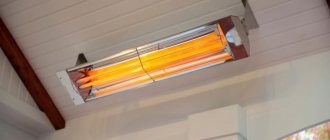WALL MOUNTING Soundbar Samsung Soundbar HW-K950
Page: 15 of 69
WALL INSTALLATION
You can use the wall mount bracket to mount this unit to the wall.
Installation Precautions
Install the device only on vertical walls.
• Do not install the Soundbar in areas with
high temperature and/or humidity. Mount the system on a stable wall that can support the weight of the main Soundbar.
Check the strength of the wall. To install the Soundbar on a wall that cannot support the weight of the main Soundbar, reinforce the wall before installation. If this is not possible, choose another wall for installation that is strong enough to support the weight of the main Soundbar.
Purchase and use mounting screws or anchors according to the type of wall (plaster, steel, wood, etc.). If possible, secure the screws into the wall framing studs.
When purchasing wall mounting screws, you need to consider the type and thickness of the wall you are installing the Soundbar on.
Length: recommended length is at least 35 mm.
Cables connecting to external devices must be connected to this unit before attaching it to the wall.
Before installation, be sure to ensure that the device is turned off and unplugged. Otherwise, it may result in electric shock.
Wall Mounting Components
Wall mounting bracket (2 PCS)
Wall mounting guide
1. Place the wall guide
mounting on a wall surface.
The wall mounting guide must be level.
If the TV is mounted on a wall, the distance from it to the Soundbar system should not be less than 5 cm.
What it is?
A soundbar is a compact type of audio system that can reproduce clearer and more powerful sound than the speakers of a standard modern TV or other device that broadcasts information and music to us. It does not take up much space, fits perfectly into any room design, and is compatible with modern systems that reproduce sound. Its body contains several speakers, and some models even have built-in subwoofers.
A soundbar is also called a sound panel, which is the “golden mean” between an expensive surround sound system and the low-power speakers of home television and radio receivers, which often produce a dull sound. Using this device, the sound becomes clear and rich, distributed evenly across the entire area of the room. Control of the soundbar is very convenient; it is performed using a remote control, and in some expensive models even using your voice.
All models support connection with other devices, as well as external drives.
How to connect a soundbar to a mobile phone
If desired, the user can connect their mobile device to the soundbar. To do this, it can use both a USB connection and Bluetooth. In the first case, owners of iPhone devices and others can transmit sound through the audio system by connecting the devices using a special AUX cable. And to connect via Bluetooth, the user must open the settings menu on his mobile device, and then go to the appropriate section. From the list of possible devices, the user must select the soundbar.
Varieties
The range of soundbars is quite diverse.
- They are active and passive. Active ones have a direct connection directly to the receiver. Passive ones only work through the receiver.
- Based on the type of arrangement, they are divided into console, mounted and soundbases.
- Most models have a wireless connection to a TV and other equipment. This wireless method is very convenient and does not cause discomfort. But some models also have connectors for a wired connection. Thanks to them, it is possible to connect to the Internet and external media.
The models also differ in sound and interior features.
- With built-in woofers and two-channel audio. Soundbars are simple sound amplifiers.
- With external subwoofer. Thanks to it, the sound is reproduced with a distinct low-frequency range.
- An additional channel is provided for reproducing high frequencies.
- Analog of home cinema with 5 channels. Due to sound projection, it simulates the sound of rear speakers. There are expensive options that include two removable speakers located remote from the main panel.
- The main panel is equipped with 7 speakers.
Rating of the best
Creative Stage Air is the most inexpensive model that can amplify sound. The package includes a micro-USB cable and a 3.5 mm cable. The speaker can be combined with a flash drive. The mini-model is made in black and has glossy and matte surfaces.
Two speakers and a passive radiator are protected by a metal grille. The model is decorated with the brand logo. The small design dimensions (10x70x78 mm) and weight (900 g) allow the model to be moved freely around the apartment. It has a frequency range of 80-20000 Hz. Speaker power 5 W with 2.0 sound format. Rated power 10 W. Shelf installation type, although it can also be installed under the TV. The device is equipped with a large lithium-ion battery with a capacity of 2200 mAh. Thanks to it, playback is possible for 6 hours. Fully charging the battery takes 2.5 hours. The model can be controlled from a distance of up to 10 meters.
Mid price category
JBL Boost TV soundbar – this model has a black fabric finish. There are rubber inserts on the back wall. There are control buttons on the top, which are duplicated on the remote control. The structure is 55 inches wide. Equipped with two speakers. The frequency range ranges from 60 to 20,000 Hz. There is a mini-Jack input (3.5 mm), JBL Connect and Bluetooth function. Shelf installation type. Sound format 2.0. Rated power 30 W. JBL SoundShift lets you quickly switch between listening to music on your smartphone and playing it on your TV.
How to choose?
Soundbars are in great demand among lovers of high-quality sound, so their range is quite wide. When choosing a model, there are several key points to consider.
- Type of audio system and its internal configuration. The quality and strength of sound reproduction depends on these factors. Much depends on the model. The volume of sound and its strength depend on the clear and calculated location of a certain number of speakers. The sound quality largely depends on the level of the audio track.
- Speaker power. It is determined by the volume range indicator. The higher the power, the better and louder the sound will be. The most suitable range for a soundbar will be from 100 to 300 W.
- Frequency. It depends on the purity of sounds. If this indicator is high, then the sound will be much cleaner. For humans, the best frequency perception range is from 20 to 20,000 Hz.
- Sometimes subwoofers are included in the package. They are designed to reproduce low frequency sound. For example, explosion sounds, knocking and other low-frequency noises. Such options are more needed by fans of games and action films.
- Connection type. Can be wireless or using optical cable and HDM interfaces. They support more audio formats, so the sound will be better.
- Dimensions. It all depends on the wishes and capabilities of the user. The larger the size of the structure, the higher its cost and functionality.
You can choose a small system, but it will not give the same playback as a large one.
Choosing the best soundbar for TV - expert opinion
A soundbar, soundbar, or multimedia speaker is a type of speaker that produces sound from a wide cabinet. This all-in-one speaker system can provide high-quality TV sound without taking up much space or being difficult to connect, set up, and operate.
The TV soundbar fits perfectly into all interiors, fits harmoniously under or above the display device and perfectly complements the crystal clear picture of the LCD TV with the same deep and voluminous stereo sound.
What is a soundbar
It's no secret that the built-in speakers in most flat-panel TVs produce low-quality sound, which is simply annoying for many users. You do not have the opportunity to clearly hear dialogue, clearly understand the author's text behind the scenes and fully immerse yourself in the atmosphere that reigns on the other side of the screen.
In the era of 4K, Ultra HD and HDR color, when on a television display you can distinguish individual hairs on a bumblebee's leg and see each flower stamen clearly, it is very important to complement the ideal and realistic picture with an equally strong surround sound system. And there is an excellent solution for this – TV sound panels.
A soundbar is much more than just a very wide speaker. Its acoustic design consists of multiple loudspeakers, and some models even have a built-in subwoofer.
Soundbars are a great compromise between an expensive surround sound system and the dull quality of your TV's built-in speakers. The sound will be fuller, richer, and thanks to the design features, it will be able to be projected more effectively throughout the entire space of your room.
What to look for when choosing
Sound panels are especially popular, which means there are countless offers on the market. But how to choose a good model? What to look for when choosing new television acoustics? Let's start with the characteristics.
Soundbars are usually considered according to the following parameters:
- Audio system type;
- Speaker power;
- Frequency;
- The presence of a subwoofer element;
- Connection type.
All soundbars are multi-channel devices, but each model is implemented in its own way. There are systems that have 2 stereo speakers (2.0), there are those that have 2 speakers and a subwoofer (2.1), you can choose different systems: 3.1, 5.1 and even 9.1. Anything, depending on your financial capabilities.
But how can one straight, long-shaped speaker create surround sound? After all, even if several speakers are placed in it, the sound will still come from one zone. The secret lies in the internal design of the soundbar.
All the speakers inside the panel are controlled by separate amplifiers and they are located differently: the central speaker is directed strictly forward, the others are deployed at a certain angle and have their own tilt trajectories. Thanks to clear and well-calculated algorithms for adding sound level and strength, the result is voluminous and versatile.
Sound quality depends not only on the technical characteristics and design features of the sound panel; much is determined by the level of the audio track.
The power of a soundbar is a parameter that determines the volume range: the higher its value, the louder and better quality the sound will be reproduced. However, this does not mean at all that you need to start only from kilowatts. The optimal parameter for a soundbar is 100-300 W.
What to choose: a soundbar or a TV audio stand?
Another version of the soundbar is a TV stand. Its speakers and connection options are classic soundbar ones, but the size (depth and width) allows you to install a TV directly on its top panel.
These stands work well with TVs that have one central leg. That is, for example, it is not a fact that TVs with legs located at the edges can be placed on such a stand: the legs may be spaced too wide, and the stand may be too narrow.
In addition, the height of such a stand may be greater than the distance from the shelf on which the TV is placed to its frame. These factors need to be taken into account if you like TV stands over classic sound bars.
Depending on the brand, such devices are called differently: audio console, sound platform, sound stand, and so on.
The best premium soundbars
Choosing a soundbar for a TV is a very important task. And if you really lack impressive, spectacular surround sound, then we are ready to introduce you to the top three acoustic leaders.
Object-based and virtual surround sound on the LG SK9Y 501W 5.1.2-channel soundbar. This is the most powerful speaker, which includes a 200 W wireless subwoofer for enhanced bass and two powerful 43 W speakers:
- System: 5.1.2;
- Power: 500 W;
- Communication: Bluetooth ver. 4.0, Wi-Fi, Ethernet RJ45;
- Frequency response: 32 to 48 kHz (mp3, wma), up to 192 kHz/24 bit (lac);
- Inputs: HDMI, optical, AUX;
- Outputs: HDMI.
Sony HT-ST5000
If you're looking for a home theater experience with surround sound, the Sony HT-ST5000 wireless soundbar may be of interest to you. With it you can truly immerse yourself in clear, lifelike audio for all your TV shows, movies, games and music:
- System: 7.1.2;
- Power: 800 W;
- Communication: Wi-Fi, Bluetooth, NFC chip, LAN;
- Frequency response: 20–20000 Hz;
- Inputs: 3 HDMI, mini-Jack (3.5 mm), optical;
- Outputs: HDMI, RCA.
SONOS PLAYBAR
The SONOS PLAYBAR soundbar is a new generation of home acoustics, which has no analogues on the market today. This is a cinema that can be adapted to your needs. If you want to have a 3.1 system, just supplement it with a separate subwoofer; if you want to organize multi-channel sound, connect a stereo pair of two PLAY:3 systems to the SUB panel.
SONOS PLAYBAR can connect all the speakers in the house into a single speaker system:
- 3.0 channel system;
- inputs: 2 for Ethernet cable, 1 optical;
- exits: no.
Great functionality, amazing ease of connection and convenient expansion options!
Soundbars with Bluetooth and wireless multiroom
Bluetooth is a feature that is often found even in budget sound bars. In most cases, Bluetooth allows the soundbar to receive audio signals from smartphones and other mobile devices. However, some higher-end soundbars can send audio to wireless headphones and speakers.
The latest innovation in soundbars is wireless multiroom. With this functionality, you can use a soundbar connected to a mobile application to work in a multi-room system - listen to music from connected sources or streaming services and send melodies to other speakers on the same network. Multiroom systems are closed or semi-closed: the soundbar decides which speakers it can communicate with.
That is, for example, a Sonos soundbar will only work with Sonos speakers, Yamaha MusicCast sound bars will only work with Yamaha devices, just as Denon Heos will only work with Heos devices, and Visio will only work with SmartCast. And the DTS Play-Fi system is cross-platform, it is used by several brands, and all devices that support it, regardless of brand, can be connected to a network.
Location
You can place the soundbar next to the TV - put it on a cabinet or hang it on the wall. In addition, if the room has a fireplace, then it can be placed on the mantelpiece. The main thing to consider is the distance between the TV equipment and the soundbar - it should not be too large.
It is worth immediately determining the need to connect additional speakers in order to allocate space for them.
Front of the TV
The sound system can be placed on a cabinet or shelf near the TV. This option is the simplest, and due to this arrangement the sound will come directly from the picture. This method is ideal for owners of small TV devices, next to which the panel can easily fit. At the same time, make sure that it does not block the screen.
If the TV is hanging on the wall, then the soundbar mount should be there too. It is advisable to mount both devices at the same time. Speaking about how exactly to hang audio equipment, it is worth noting that for this purpose, wall fasteners are often included with the device.
- Place the bracket against a vertical surface and secure it with screws. When installing the soundbar under the TV, the arrow on the bracket should be exactly in the center of the TV.
- Align the screw holders with the required holes on the sides of the panel and secure.
- Install the soundbar into the connectors and check the location of the pins - they should be at the very bottom of the connectors.
The panel should hang at a distance of at least 10 cm from the TV. This is necessary for convenient connection of wires.
What is the difference between soundbars with surround sound systems?
There are also sound bars that come with both a subwoofer and satellites for surround sound. In these systems, the subwoofers are wireless, but the satellites are attached to the subwoofer with cables. The soundbar handles the front channels - left, center and right, but sends the bass and rear channels to the subwoofer. The subwoofer redirects the signal to the satellites, and itself “buzzes” with bass. In this situation, there are no wires that run from the TV to the rear channels, but the satellites still need to be connected to the subwoofer, and for this reason the subwoofer should be located in the back of the room .
Connection
There are several ways to connect your sound system to your TV, depending on the type of panel you choose - wired via HDMI, analog, coaxial or optical input, or wireless via Bluetooth.
Via HDMI
In this method, it is important to first check that the equipment supports audio return channel technology, which is called HDMI ARC - Audio Return Channel. This is necessary so that the sound signal from the TV is output to the sound bar.
For such a connection, after connecting the cable, in the TV audio settings you need to select the option of transmitting sound through external acoustics, and not the built-in speakers.
Connecting via HDMI is convenient because you can control the volume of the soundbar using the TV remote control.
Optical or coaxial input
If your equipment does not have HDMI connectors, you can connect the sound bar to your TV via a digital audio interface. The vast majority of sound systems have optical and coaxial inputs. In addition, with a cable, you can also connect a game console through these interfaces.
Here, after connecting the power cords in the TV settings, you need to perform the same actions as in the previous version.
The main advantage of this method is support for 5.1 channel sound. When any possible audio sources are connected to the TV, the audio signal is sent through the specified interface to the soundbar. But it is worth considering a negative point, which is associated with the lack of support for the HD format.
Analog connector
This method should be considered as an alternative if there are no other options, since the sound will not be multi-channel, which means you should not rely on its high quality. Analog connectors are made in the form of RCA sockets in red and white colors.
The only caveat is that you can connect the soundbar to the TV only through an RCA to mini-jack adapter. This is explained by the socket in sound panels - the diameter of the standard connector is 3.5 mm.
Wireless
If you have a built-in Bluetooth receiver, you can connect your soundbar wirelessly. Support for such a connection is already available in almost all sound panels, even in the mid-price segment.
Wireless audio transmission is possible from TV, phone, tablet, laptop. The difficulty is to properly pair the devices with each other.
Since this type of connection is not the easiest for an inexperienced user, you can use NFC technology. To do this, just bring the connected gadget to the desired point on the soundbar body, which is indicated by special symbols.
Setting up soundbars with a subwoofer
If your soundbar comes with a subwoofer, you need to find a suitable location for it. It must be located, firstly, conveniently (that is, next to the outlet), and secondly, so that it sounds.
The sub, standing in the right place (where it booms best), needs to be synchronized with the soundbar. A properly installed subwoofer should sound at the same volume level as the soundbar.
Bose SoundTouch 300 soundbar and AcoustiMass 300 subwoofer, complemented by Virtually Invisible 300 wireless speakers
First, you should check whether the soundbar remote control has buttons to control the volume of the soundbar and the subwoofer separately. If so, it will be much easier to synchronize devices. You also need to see if the soundbar has a master volume control. It will allow you to simultaneously adjust the volume of the soundbar and subwoofer, maintaining balance, and you won’t have to synchronize the volume levels of the devices every time.
Recommendations
When setting up a soundbar in a room, you should follow the basic recommendations that will help you avoid problems and extend its life:
- Keep cables away from children.
- After installation is complete, it is better to check the strength of the fasteners again.
- Do not place the panel in a room with high humidity levels.
- The bracket should be mounted on a smooth surface.
- Connect to the connectors only after checking the safety rules so that both devices are not damaged due to negligence.
For more surround sound, you should choose a model to which you can connect a separate subwoofer. Here the connection can also be either wired or wireless.
Soundbars are popular due to their ease of setup and use. Premium equipment can replace an entire home theater. And simpler panels will improve sound quality when watching movies and listening to music. Therefore, the selection and installation of a specific model must be approached carefully.
Types of equipment
Despite the fact that soundbars appeared relatively recently, the range of such systems is already huge. It is offered by different manufacturers in different versions. There are more budget, advanced and premium models.
The soundbar has a compact oblong body. This allows you to easily place it on a stand under the TV, simply lay it on the floor or hang it on the wall.
Equipment can be divided into 2 categories:
- Active soundbars. The most popular analogue for home theater speaker systems. Such sound panels are used as independent audio systems. To connect, just connect the TV and panel outputs, and you're done.
- Passive soundbars. These panels are sometimes described as 2-in-1 or 3-in-1 speaker systems. There is no built-in amplifier. To play sound, a connection to a theater receiver or external amplifier is required.
Objectively, the first option is considered more preferable.
Before determining how best to connect a purchased sound bar to a TV, you should understand what kind of device the user is dealing with.
There are several main types of sound panels:
- Mono column. Has a built-in subwoofer. A type of active soundbars. It is distinguished by its compact size and affordable price. Here there are only the most basic functions that allow you to use a mono speaker as an acoustic television system. Mono speakers can be easily connected to TV, computers, laptops, smartphones, etc.
- Sound projector. They should only be placed on flat surfaces. There is also a built-in subwoofer. The diffuser of the low-frequency speakers is directed downward, which allows you to change the bass parameters. There are several functions provided at the same time. This is a receiver, amplifier and acoustics.
- Passive panels with separate subwoofer. This is a multi-channel sound system that can easily replace a serious home theater speaker system. At the same time, the dimensions are quite compact, which allows minimizing the occupied space. Such complexes create the most effective sound when watching a film, forcing viewers to immerse themselves in what is happening on the screen. Connection is usually done via Bluetooth or wires.
- Soundbase. It is shaped like a TV stand. These are multi-channel acoustics devices, often come with a DVD player and other additional functions for Smart TV.
- Multifunctional panels. These are systems that have a separate subwoofer and several speakers. Communication between them is carried out via Bluetooth. Speakers can be placed around the perimeter of the room.
Each buyer must decide for himself what to choose from this variety. Buying a soundbar is not budget-friendly, but the investment is fully worth it. All that remains is to make the connection.











